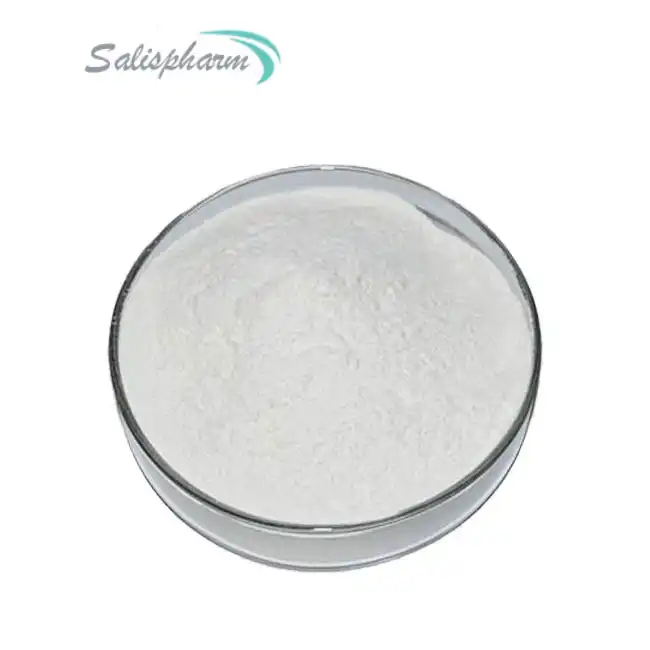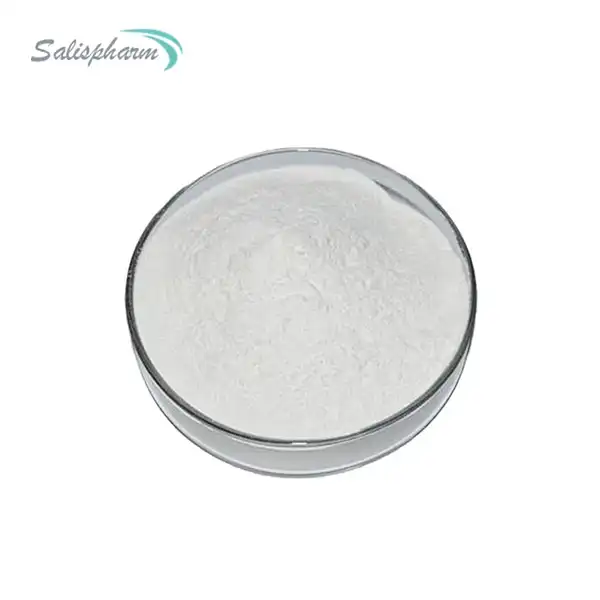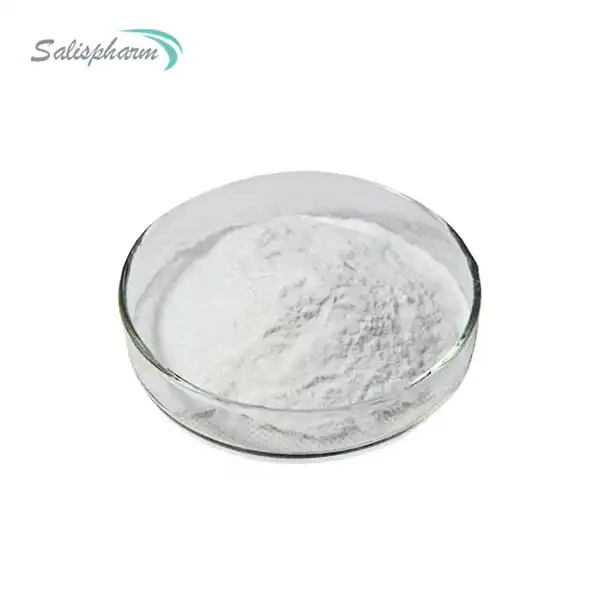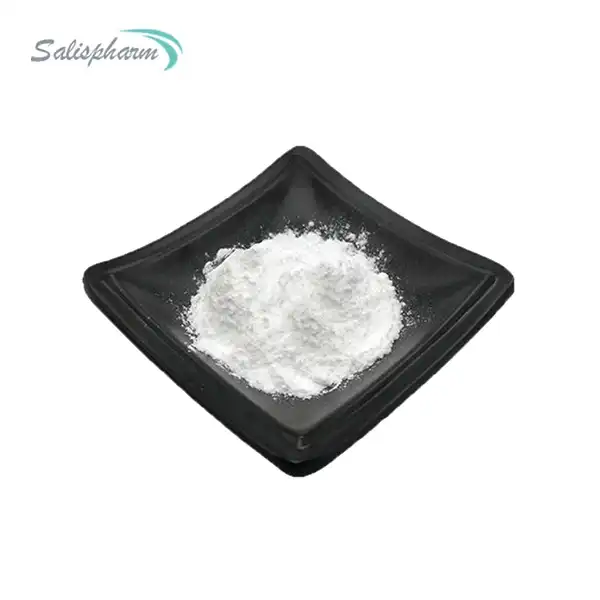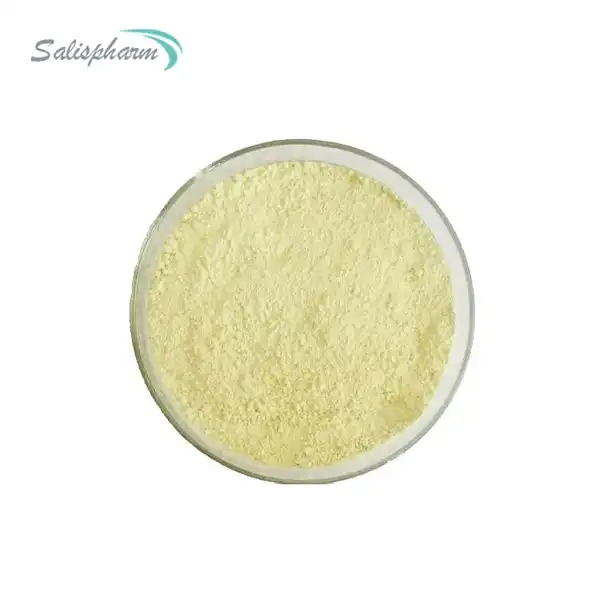Racecadotril powder for oral suspension is an antidiarrheal medication used to treat acute diarrhea in adults and children. This medication works by inhibiting the enzyme enkephalinase, which helps reduce excessive intestinal secretions and normalize bowel movements. Racecadotril is available as a powder that is mixed with water to create an oral suspension, making it easier to administer, especially for children or those who have difficulty swallowing pills.
What are the main benefits of racecadotril powder for oral suspension?
Racecadotril powder for oral suspension offers several significant benefits in the treatment of acute diarrhea. First and foremost, its unique mechanism of action sets it apart from other antidiarrheal medications. By inhibiting the enzyme enkephalinase, racecadotril reduces excessive fluid secretion in the intestines without affecting intestinal motility. This means it can effectively alleviate diarrhea symptoms without causing constipation, a common side effect of many other antidiarrheal drugs.
One of the key advantages of racecadotril is its rapid onset of action. Studies have shown that patients often experience relief from diarrhea symptoms within the first 24 hours of treatment. This quick response can be particularly beneficial for those suffering from severe or debilitating diarrhea, helping to prevent dehydration and other complications associated with prolonged episodes of acute diarrhea.
Another significant benefit of racecadotril powder for oral suspension is its suitability for use in both adults and children. The powder formulation allows for easy dose adjustments based on age and weight, making it a versatile option for healthcare providers treating patients across different age groups. This is particularly important in pediatric care, where appropriate dosing and ease of administration are crucial factors in treatment success.
Furthermore, racecadotril has demonstrated a favorable safety profile compared to some other antidiarrheal medications. It does not cross the blood-brain barrier, which minimizes the risk of central nervous system side effects. Additionally, because it doesn't affect intestinal motility, racecadotril doesn't increase the risk of bacterial overgrowth or toxic megacolon, potential complications associated with some other antidiarrheal agents.
The powder for oral suspension formulation also offers practical benefits. It can be easily mixed with water, making it more palatable and easier to swallow for those who have difficulty with tablets or capsules. This can improve patient compliance, especially in children or elderly patients who may struggle with other forms of medication.
How does racecadotril powder compare to other antidiarrheal medications?
When comparing racecadotril powder for oral suspension to other antidiarrheal medications, several key differences emerge that highlight its unique position in the treatment of acute diarrhea. To understand these differences, it's essential to consider the mechanisms of action, efficacy, safety profiles, and target populations of various antidiarrheal agents.
One of the most commonly used antidiarrheal medications is loperamide, which works by slowing down intestinal motility. While effective in reducing diarrhea, loperamide can lead to constipation and abdominal discomfort. In contrast, racecadotril's mechanism of action focuses on reducing excessive fluid secretion without affecting gut motility. This means that racecadotril can effectively treat diarrhea while maintaining normal bowel function, potentially leading to a more comfortable recovery for patients.
In terms of efficacy, studies have shown that racecadotril is at least as effective as loperamide in reducing the duration and severity of acute diarrhea in adults. However, racecadotril has demonstrated superior efficacy in pediatric populations, where it has been shown to reduce stool output and duration of diarrhea more effectively than placebo or other standard treatments. This makes racecadotril a particularly valuable option for treating childhood diarrhea, a significant cause of morbidity and mortality worldwide.
Safety is another crucial factor when comparing antidiarrheal medications. Racecadotril has demonstrated a favorable safety profile, with fewer reported side effects compared to some other antidiarrheal agents. Unlike loperamide, which is not recommended for use in young children due to the risk of respiratory depression and other serious side effects, racecadotril is considered safe for use in children as young as three months old. This makes it a versatile option for healthcare providers treating patients across all age groups.
Another important comparison is with bismuth subsalicylate, another common over-the-counter antidiarrheal medication. While bismuth subsalicylate can be effective, it may cause darkening of the tongue and stool, which can be alarming for patients. Racecadotril does not have these cosmetic side effects, potentially improving patient comfort and compliance.
When considering the target population, racecadotril stands out for its suitability in treating acute diarrhea in both adults and children. Many other antidiarrheal medications have age restrictions or are not recommended for certain populations. For example, while probiotics are often used to treat diarrhea, their efficacy can vary depending on the specific strains used and the cause of diarrhea. Racecadotril, on the other hand, has demonstrated consistent efficacy across different age groups and causes of acute diarrhea.
What are the potential side effects of racecadotril powder for oral suspension?
While racecadotril powder for oral suspension is generally well-tolerated, it's important for patients and healthcare providers to be aware of potential side effects. Understanding these possible adverse reactions can help in monitoring treatment and ensuring patient safety.
One of the most commonly reported side effects of racecadotril is headache. In clinical trials, headache occurred in a small percentage of patients, typically mild to moderate in intensity and resolving without intervention. Patients experiencing persistent or severe headaches should consult their healthcare provider, as this could be a sign of dehydration or another underlying condition.
Gastrointestinal symptoms such as nausea, vomiting, and abdominal pain have also been reported in some patients taking racecadotril. These symptoms are generally mild and transient, often resolving on their own without discontinuation of the medication. However, if these symptoms persist or worsen, it's important to seek medical advice, as they could be related to the underlying diarrheal illness rather than the medication itself.
Skin reactions, including rashes and pruritus (itching), have been observed in rare cases. While these reactions are typically mild, any severe or persistent skin reactions should be reported to a healthcare provider immediately, as they could indicate an allergic reaction.
In very rare instances, more serious side effects such as angioedema (swelling of the face, lips, tongue, or throat) have been reported. Although extremely uncommon, these reactions require immediate medical attention as they can potentially be life-threatening.
It's worth noting that the incidence of side effects with racecadotril is generally low compared to some other antidiarrheal medications. For example, racecadotril is less likely to cause constipation or abdominal discomfort compared to loperamide, which can be particularly beneficial for patients with sensitive gastrointestinal systems.
When considering the use of racecadotril in special populations, such as pregnant or breastfeeding women, caution is advised due to limited data. While animal studies have not shown evidence of harm to the fetus, human data is insufficient to rule out any risk definitively. Therefore, the use of racecadotril during pregnancy should only be considered if the potential benefits outweigh the potential risks.
For elderly patients, no specific dose adjustments are required, but as with any medication, careful monitoring is recommended due to the potential for decreased renal function in this population.
It's important to note that while racecadotril itself has a low risk of drug interactions, the powder for oral suspension may contain additives or excipients that could potentially interact with other medications. Patients should always inform their healthcare provider about all medications they are taking, including over-the-counter drugs and supplements.
In conclusion, racecadotril powder for oral suspension is a valuable addition to the antidiarrheal medication arsenal. Its unique mechanism of action, efficacy in both adults and children, and favorable safety profile make it a versatile option for treating acute diarrhea. While it does have potential side effects, these are generally mild and occur less frequently compared to some other antidiarrheal medications. As with any medication, patients should use racecadotril under the guidance of a healthcare provider and report any concerning symptoms promptly.
If you are also interested in this product and want to know more product details, or want to know about other related products, please feel free to contact iceyqiang@aliyun.com.
References:
1. Matheson, A. J., & Noble, S. (2000). Racecadotril. Drugs, 59(4), 829-835.
2. Lehert, P., Chéron, G., Calatayud, G. A., Cézard, J. P., Castrellón, P. G., Garcia, J. M., ... & Bautista, M. S. (2011). Racecadotril for childhood gastroenteritis: an individual patient data meta-analysis. Digestive and Liver Disease, 43(9), 707-713.
3. Farthing, M., Salam, M. A., Lindberg, G., Dite, P., Khalif, I., Salazar-Lindo, E., ... & LeMair, A. (2013). Acute diarrhea in adults and children: a global perspective. Journal of clinical gastroenterology, 47(1), 12-20.
4. Eberlin, M., Mück, T., & Michel, M. C. (2012). A comprehensive review of the pharmacodynamics, pharmacokinetics, and clinical effects of the neutral endopeptidase inhibitor racecadotril. Frontiers in pharmacology, 3, 93.
5. Salazar-Lindo, E., Santisteban-Ponce, J., Chea-Woo, E., & Gutierrez, M. (2000). Racecadotril in the treatment of acute watery diarrhea in children. New England Journal of Medicine, 343(7), 463-467.
6. Mehta, S., Khandelwal, P. D., Jain, V. K., & Sihag, M. (2012). A comparative study of racecadotril and loperamide in acute diarrhea. Journal of the Indian Medical Association, 110(4), 268-271.
7. Gallelli, L., Colosimo, M., Tolotta, G. A., Linden, R., Pirritano, D., Sturniolo, G. C., ... & De Sarro, G. (2010). Prospective randomized double-blind trial of racecadotril compared with loperamide in elderly people with gastroenteritis living in nursing homes. European journal of clinical pharmacology, 66(2), 137-144.
8. Wang, H. H., Shieh, M. J., & Liao, K. F. (2005). A blind, randomized comparison of racecadotril and loperamide for stopping acute diarrhea in adults. World journal of gastroenterology: WJG, 11(10), 1540.
9. Alam, N. H., Ashraf, H., Khan, W. A., Karim, M. M., & Fuchs, G. J. (2003). Efficacy and tolerability of racecadotril in the treatment of cholera in adults: a double blind, randomised, controlled clinical trial. Gut, 52(10), 1419-1423.
10. Tormo, R., Polanco, I., Salazar-Lindo, E., & Goulet, O. (2008). Acute infectious diarrhoea in children: new insights in antisecretory treatment with racecadotril. Acta Paediatrica, 97(8), 1008-1015.




